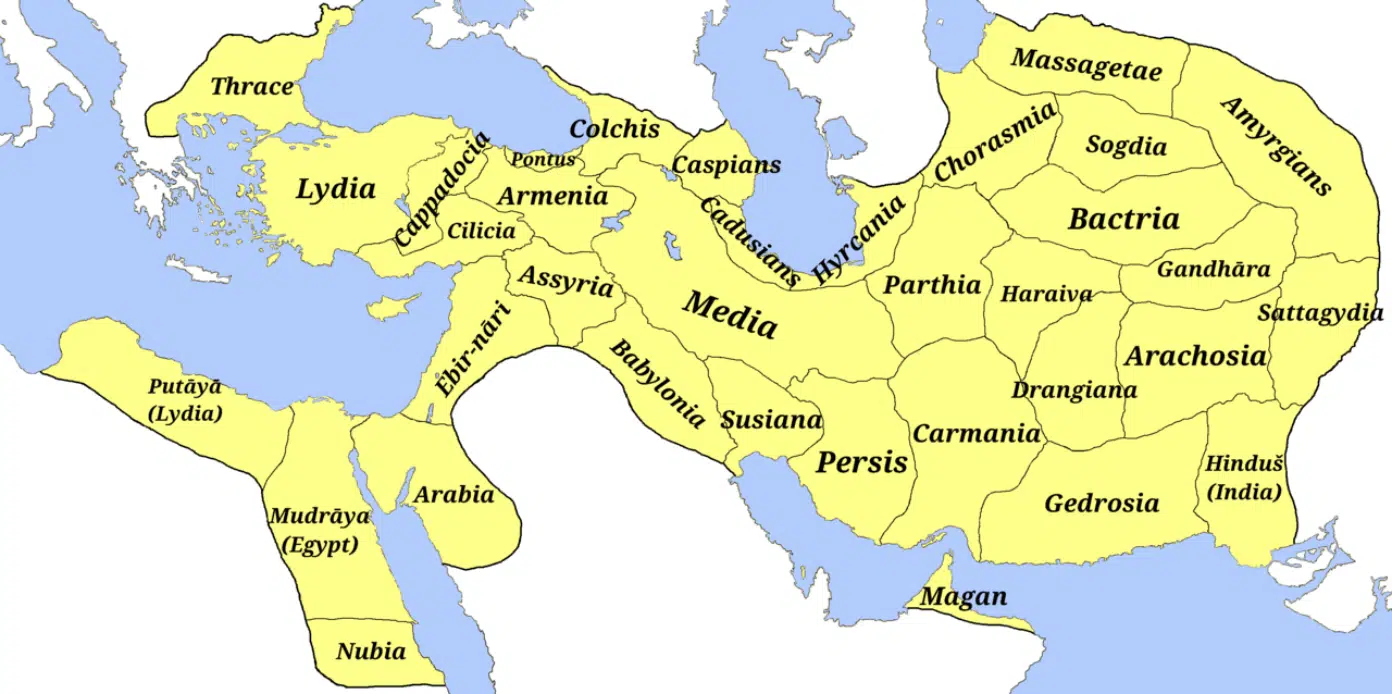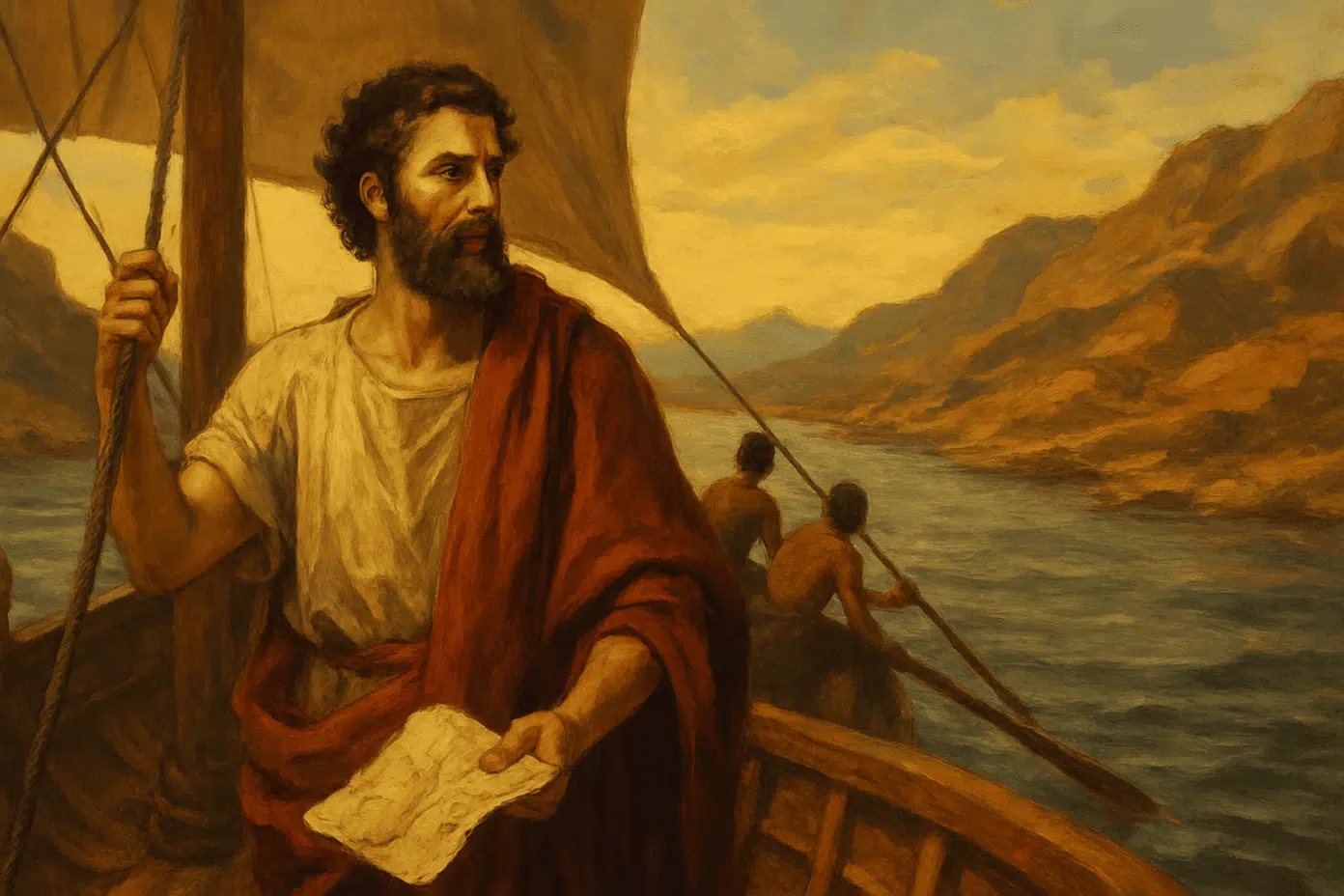

Posted on 08/07/2025 4:56:10 PM PDT by nickcarraway
Scylax of Caryanda, a Greek in the service of the Persian Great King, is best known for his early exploration of India and for shaping what the ancient Greeks knew about the East. Born in the late 6th century BC in a Carian town of Asia Minor (Anatolia), he lived at the cultural crossroads of Greek and Persian influence. Scylax became both an explorer and a writer—an essential figure in the transmission of geographical knowledge between civilizations.
Unfortunately, Scylax’s original writings have not survived. What we know of his life and work comes from fragments preserved by later historians like Herodotus. According to Herodotus, it was through Scylax that the ancient Greek world first gained knowledge of the distant and mysterious lands of India.
The expedition of Scylax in India The journey of Scylax, undertaken around 515 BC, was nothing short of remarkable. According to Herodotus, our main source on his expedition, Scylax was sent by the Persian King Darius I to explore the course of the Indus Rivera—a strategic military and economic mission driven by Darius’s imperial ambitions of expanding his empire’s reach.
Setting out from the city of Caspatyrus, located in what is now modern-day Pakistan, Scylax and his crew were tasked with sailing south and westward down the Indus River to the sea. From there, they were to turn west and sail along the Arabian coast to the Red Sea, eventually returning to the Persian heartland. This treacherous and complicated journey to unfamiliar lands took thirty months. For nearly three years, Scylax and his crew navigated unfamiliar waters and mapped out the broader region the Greeks would come to call India.
The satrapies of the Achaemenid Empire. The satrapies of the Achaemenid Empire at its greatest territorial extent under the rule of Darius the Great (522–486 BC)[. Credit: M.r ebrahim zadeh, Wikimedia Commons, Public Domain This illustrates the massive scale of the task at the time and the challenges the crew faced. The subsequent addition of the Indus Valley as the twentieth satrapy of the Achaemenid Empire made this province one of the wealthiest in the empire, demonstrating the success of Scylax’s expedition and its imperial purpose. This historical feat—of a Greek explorer serving the Persian king—underscores how the ancient world was a truly complex place, where the pursuit of geographical knowledge was often inextricably linked to power and expansion. Grecian Delight supports Greece The lost account of Scylax While the details of the journey are captivating, the real loss for historians is that Scylax’s own written account of his travels has not survived. Believed to have been titled Periplus, this manuscript has vanished with time. Its existence and glimpses of its content come to us only through scattered references by later writers such as Aristotle and Strabo, in addition to what we learn from Herodotus himself.
These fragments suggest that Scylax’s own account contained detailed descriptions of the peoples, flora, and fauna of the region, including fantastical tales of gold-digging ants that Herodotus famously repeated, which is how they entered historical memory. Perhaps most importantly, it was from this now-lost text that the Greek world first acquired systematic knowledge of India. Scylax’s expedition and subsequent writings laid the groundwork for how the subcontinent was imagined by the Greeks for centuries to come, transforming it from a mysterious frontier into a distant but tangible part of their wider world.
"Sangam" is a Hindi term that describes the point at which two rivers meet. Here, the Sangam of the Indus and Zanskar Rivers, about 30 kilometers (20 miles) west of Leh. “Sangam” is a Hindi term that describes the point at which two rivers meet. Here, the Sangam of the Indus and Zanskar Rivers, about 30 kilometers (20 miles) west of Leh. Credit: Sundeep bhardwaj, Wikimedia Commons, CC BY-SA 3.0 A literary lookalike An intriguing detail of Scylax’s legacy is a much later geographical text that also bears the title Periplus. This work, however, centers on the Mediterranean and Black Sea and was likely composed in the mid-4th century BC. Mistakenly attributed to Scylax, it is now known as the Periplus of Pseudo-Scylax—a testament to his lasting reputation as a great explorer.
Although it was a completely different work, the fact that an anonymous author chose to write under his name speaks volumes about his fame in the ancient world. By the time of Aristotle, Scylax had already become a legendary figure, so closely associated with geographical knowledge that his name lent authority and credibility to later manuscripts. This confusion between the historical Scylax and his literary namesake persisted for centuries, blurring the boundaries between the man and the myth.
The story of Scylax, therefore, is a lesson in how historical memory is shaped, reframed, and repurposed over time, turning a man into a symbol of exploration itself. His expedition was one of the most important early efforts to expand Greek knowledge of the East, and though we may never read his original words, the secondhand accounts of his journey remain an invaluable part of that legacy.


India has a lot to be thankful for the Greek visitors. A lot f customs, attire, food preparation, architectural styles of North India are derived from Greek influence.
Alexander the Great’s invasion of the Indian subcontinent marks a significant chapter in ancient history, occurring around 327 to 326 BCE.
A great gift to India.
Unfortunately, Scylax’s original writings have not survived.
—
Because muslims destroyed Classical Western Civilization and most of the writings they found as anathema. Just like today, nothing has changed in this civilizational war.
India has been invaded by Aryan nomads 4500 years ago, Greeks, Arabs, Mongols, Persians, Portuguese, and final invaders the British.
All brought something good to India.
No! They all came to exploit the wealth of India. For a thousand years India was the richest country in the world with gold, diamonds, spices and most fertile land in the world.
Even now with 1500+ million people India can export surplus food.
Sun never set on the British empire at one time with colonies all over the world. Guess which colony was considered the crown jewel in British empire? India!!
To call this "exploitation" is intellectually lazy. It was a trade and cultural exchange. They took raw materials and used their superior knowhow to convert them into useful goods that could be sold around the known world. In exchange, they enriched India culturally and socially by introducing new knowledge of craftsmanship and classical wisdom (Aryans), architecture and sculpture (Greeks, who influenced the Asoka-era), cuisine, dress, language enrichment -Urdu/Hindi has a lot of borrowed Persian words, and grand architecture - (Mongols, Arabs, Persians), and finally the key elements of Westernization and infrastructure, thanks to the Europeans, most notably the British. India has been infinitely enriched as a result of these invasions.
Disclaimer: Opinions posted on Free Republic are those of the individual posters and do not necessarily represent the opinion of Free Republic or its management. All materials posted herein are protected by copyright law and the exemption for fair use of copyrighted works.